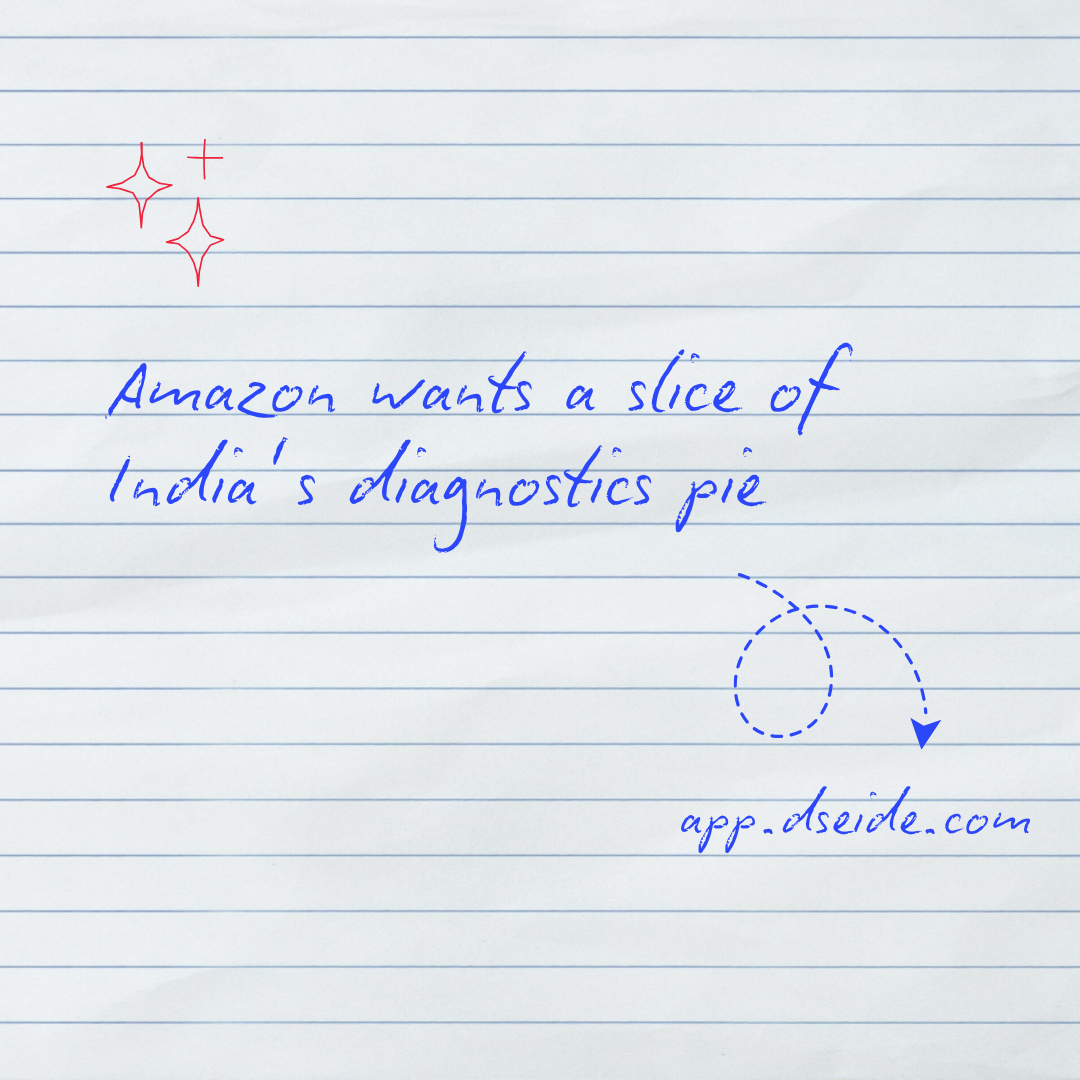Over the past week, you might’ve noticed something interesting. Shares of India’s diagnostic companies have taken a bit of a tumble. Stocks like Suraksha Diagnostic, Krsnaa Diagnostics, Thyrocare Technologies, Metropolis and Dr. Lal PathLabs slipped by up to 2%, even as the broader market moved in the opposite direction.
And you’ve probably guessed what’s spooked investors this time. But if you haven’t, well, Amazon just threw its hat into India’s diagnostics ring. It’s now offering at-home test collections, digital reports and bundled health services across six cities covering 450 pincodes. The buzz is that it could shake things up in a big way.
But here’s the thing. This isn’t Amazon’s first rodeo in Indian healthcare. It’s already dipped its toes into e-pharmacies and online consultations. Sure, those services are still around, but let’s be honest. They haven’t exactly set the world on fire. It’s more of a work-in-progress than a roaring success.
So why is Amazon doubling down and adding new pieces to its healthcare puzzle when it hasn’t really cracked the code yet?
Well, the simplest answer is that it already had e-pharmacies. But to figure out what to sell, it needed to know why people were buying medicines in the first place. That’s where online consultations came in handy. People could talk to doctors from home, get prescriptions and Amazon could plug into that system — supplying medicines and figuring out which pharmacy partners to work with in each region.
But what happens when a doctor suggests a blood test? People typically head to the nearest lab or get it done through a hospital. That’s a piece of the puzzle Amazon didn’t have. So diagnostics felt like a natural extension.
And when you zoom out, the diagnostics space in India does look like a ripe opportunity.
For context, right now, hospital labs control about 38% of the market. Standalone diagnostic centres take 37% and the big branded chains — the likes of Dr. Lal PathLabs and Thyrocare, hold the remaining 22%. But rewind to five years ago, and the picture looked different. Back then, standalone labs dominated nearly half the market, while big chains held just a measly 15%. Clearly, the winds have shifted.
Source: finshots.in
#healthcarestartup #dseidehealthcarenetwork
And you’ve probably guessed what’s spooked investors this time. But if you haven’t, well, Amazon just threw its hat into India’s diagnostics ring. It’s now offering at-home test collections, digital reports and bundled health services across six cities covering 450 pincodes. The buzz is that it could shake things up in a big way.
But here’s the thing. This isn’t Amazon’s first rodeo in Indian healthcare. It’s already dipped its toes into e-pharmacies and online consultations. Sure, those services are still around, but let’s be honest. They haven’t exactly set the world on fire. It’s more of a work-in-progress than a roaring success.
So why is Amazon doubling down and adding new pieces to its healthcare puzzle when it hasn’t really cracked the code yet?
Well, the simplest answer is that it already had e-pharmacies. But to figure out what to sell, it needed to know why people were buying medicines in the first place. That’s where online consultations came in handy. People could talk to doctors from home, get prescriptions and Amazon could plug into that system — supplying medicines and figuring out which pharmacy partners to work with in each region.
But what happens when a doctor suggests a blood test? People typically head to the nearest lab or get it done through a hospital. That’s a piece of the puzzle Amazon didn’t have. So diagnostics felt like a natural extension.
And when you zoom out, the diagnostics space in India does look like a ripe opportunity.
For context, right now, hospital labs control about 38% of the market. Standalone diagnostic centres take 37% and the big branded chains — the likes of Dr. Lal PathLabs and Thyrocare, hold the remaining 22%. But rewind to five years ago, and the picture looked different. Back then, standalone labs dominated nearly half the market, while big chains held just a measly 15%. Clearly, the winds have shifted.
Source: finshots.in
#healthcarestartup #dseidehealthcarenetwork
Over the past week, you might’ve noticed something interesting. Shares of India’s diagnostic companies have taken a bit of a tumble. Stocks like Suraksha Diagnostic, Krsnaa Diagnostics, Thyrocare Technologies, Metropolis and Dr. Lal PathLabs slipped by up to 2%, even as the broader market moved in the opposite direction.
And you’ve probably guessed what’s spooked investors this time. But if you haven’t, well, Amazon just threw its hat into India’s diagnostics ring. It’s now offering at-home test collections, digital reports and bundled health services across six cities covering 450 pincodes. The buzz is that it could shake things up in a big way.
But here’s the thing. This isn’t Amazon’s first rodeo in Indian healthcare. It’s already dipped its toes into e-pharmacies and online consultations. Sure, those services are still around, but let’s be honest. They haven’t exactly set the world on fire. It’s more of a work-in-progress than a roaring success.
So why is Amazon doubling down and adding new pieces to its healthcare puzzle when it hasn’t really cracked the code yet?
Well, the simplest answer is that it already had e-pharmacies. But to figure out what to sell, it needed to know why people were buying medicines in the first place. That’s where online consultations came in handy. People could talk to doctors from home, get prescriptions and Amazon could plug into that system — supplying medicines and figuring out which pharmacy partners to work with in each region.
But what happens when a doctor suggests a blood test? People typically head to the nearest lab or get it done through a hospital. That’s a piece of the puzzle Amazon didn’t have. So diagnostics felt like a natural extension.
And when you zoom out, the diagnostics space in India does look like a ripe opportunity.
For context, right now, hospital labs control about 38% of the market. Standalone diagnostic centres take 37% and the big branded chains — the likes of Dr. Lal PathLabs and Thyrocare, hold the remaining 22%. But rewind to five years ago, and the picture looked different. Back then, standalone labs dominated nearly half the market, while big chains held just a measly 15%. Clearly, the winds have shifted.
Source: finshots.in
#healthcarestartup #dseidehealthcarenetwork




